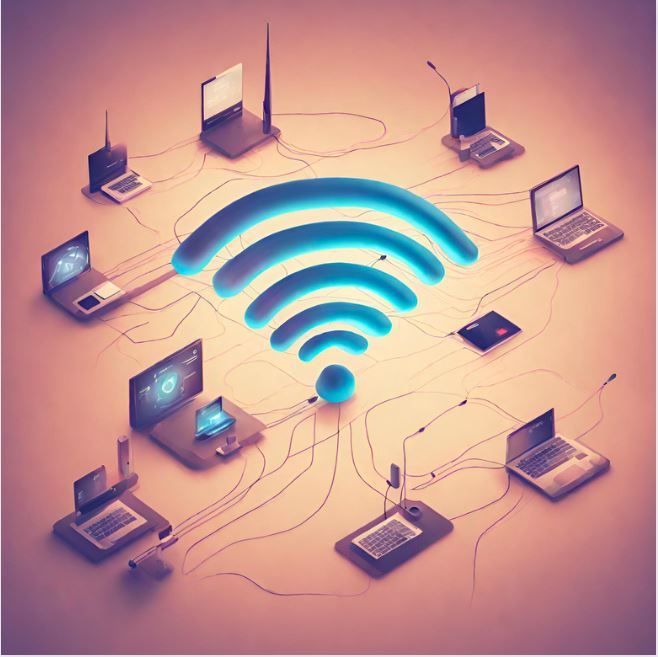AI’s Predictions for the Next Big Breakthroughs in Telecommunications!
In an era where the pace of technological advancement can leave even the savviest tech enthusiast breathless, keeping a finger on the pulse of what’s next is more exciting – and challenging – than ever. Telecommunications, the backbone of our hyper-connected world, is no exception. With transformations that sound straight out of a sci-fi novel, it’s a sector that’s always on the move, shaping how we live, work, and interact. To get a sense of what’s on the telecom horizon, we turned to an AI for insights.
Its predictions, ranging from quantum leaps in security to AI-managed networks, not only sketch a future brimming with innovation but also remind us of the playful ingenuity driving technology forward. Let’s dive into a light-hearted exploration of these six potential breakthroughs that could redefine the telecommunications landscape.
1. Quantum Communications and Encryption: Quantum technology, particularly in encryption and secure communications, is poised to revolutionize telecommunications. Quantum encryption can provide theoretically unbreakable encryption methods, crucial for both personal privacy and national security. Furthermore, quantum communications, though in early stages, promise ultra-secure transmission channels, potentially making eavesdropping and intercepts impossible. In the quantum world, eavesdroppers might have to find a new hobby – maybe quantum mechanics?

2. 6G Networks: While 5G is still being rolled out globally, research into 6G has already begun. 6G is expected to provide significantly higher speeds, lower latency, and more reliable connections, supporting technologies like holographic communication, advanced Internet of Things (IoT) applications, and potentially integrating AI for network optimization. It may also include new forms of wireless communication using terahertz or light-based technologies. 6G might just download the entire internet before you even finish saying “6G.”

3. Integration of Satellite and Terrestrial Networks: With companies like SpaceX and OneWeb deploying large constellations of low-earth-orbit (LEO) satellites, the next big step could be the seamless integration of these satellite networks with traditional ground-based cellular networks. This integration could provide truly global, high-speed internet coverage, even in remote or underserved areas. In the future, “no signal” might just be an urban legend, like “I’m out of data” or “battery full.”

4. AI-Driven Network Optimization and Management: Artificial Intelligence (AI) is expected to play a key role in managing increasingly complex telecommunications networks. AI can predict network loads, detect and respond to issues in real-time, and optimize traffic routing and signal quality, leading to more efficient, reliable, and user-centric networks. Networks are getting so smart, soon they’ll start giving us relationship advice… ‘Have you tried turning it off and on again?

5. Edge Computing and Advanced IoT Integration: As more devices become interconnected and smarter, edge computing – processing data near the source rather than in a central cloud-based system – will become crucial. This approach reduces latency, eases the burden on central networks, and supports real-time data processing for applications like autonomous vehicles, smart cities, and personalized IoT devices. With edge computing, your fridge will not only know when you’re out of milk but might also start judging your late-night snack choices.

6. Virtualized and Software-Defined Networking: Telecommunications is moving towards more flexible, software-driven models. Networks that are software-defined and virtualized can be more quickly adapted, scaled, and managed. This flexibility allows for more efficient use of resources and easier implementation of new services, including customizable network slices for different applications or customers. Software-defined networks: because hardware was getting too hard to keep up with – now we just need to update, not uproot.

As we round up this exploration of what might lie ahead in telecommunications, one thing becomes crystal clear: the future is as thrilling as it is unpredictable. From quantum communications that might have us rethinking the word ‘secure,’ to 6G networks promising speeds that could turn our current internet into a quaint memory, the horizon is shimmering with potential. The blend of satellite networks with terrestrial ones, AI’s takeover of network management, the advent of edge computing, and the shift towards virtualized networks, all paint a picture of a world more connected, more immediate, and perhaps, a bit wiser in its use of technology.
Guided by an AI’s predictions, we’ve seen glimpses of a future that’s not only technologically advanced but also brimming with possibilities that could transform our everyday lives. So, let’s fasten our seatbelts – the telecommunications journey ahead is sure to be an exhilarating ride!
If you liked these, check out an Ai’s predictions for the next advancements in entertainment!
Need something more humorous? Read our list of 15 funny autocorrect fails or our list of 10 hilarious cell phone memes!
